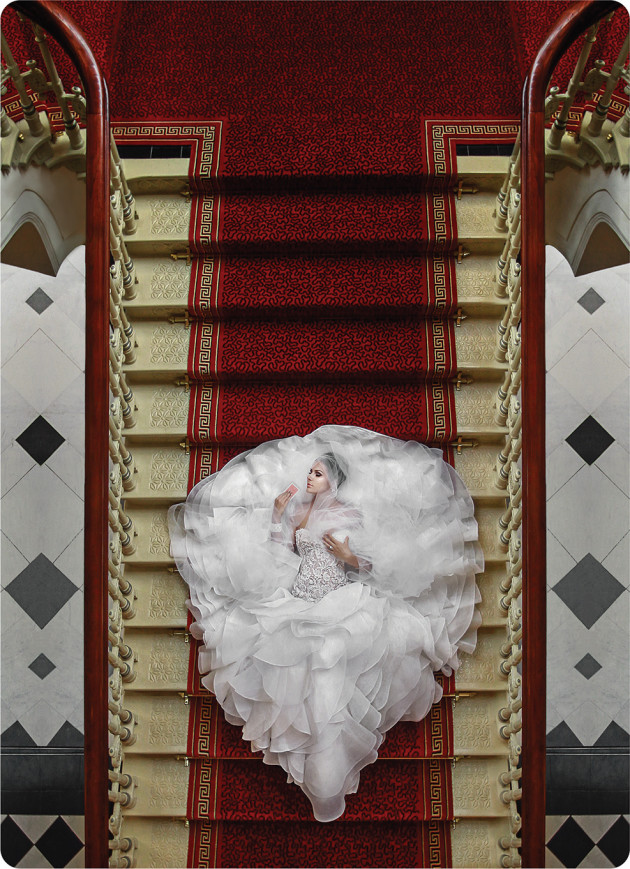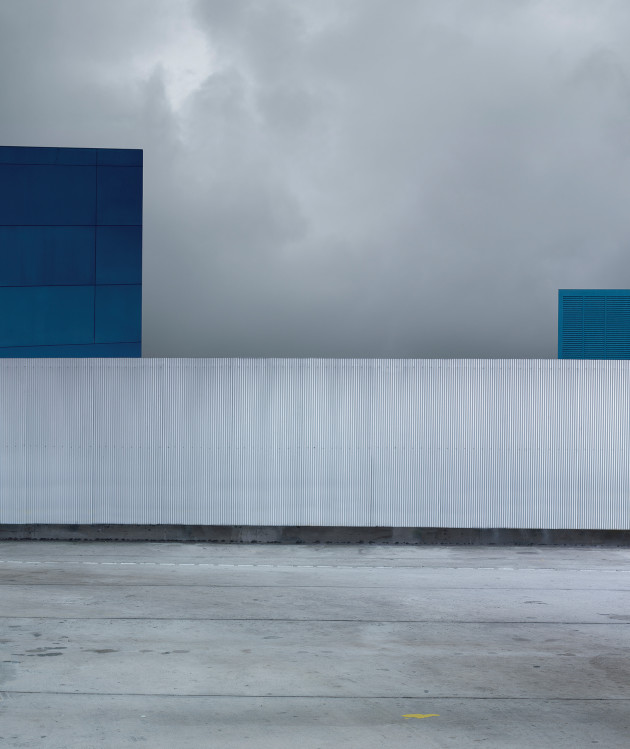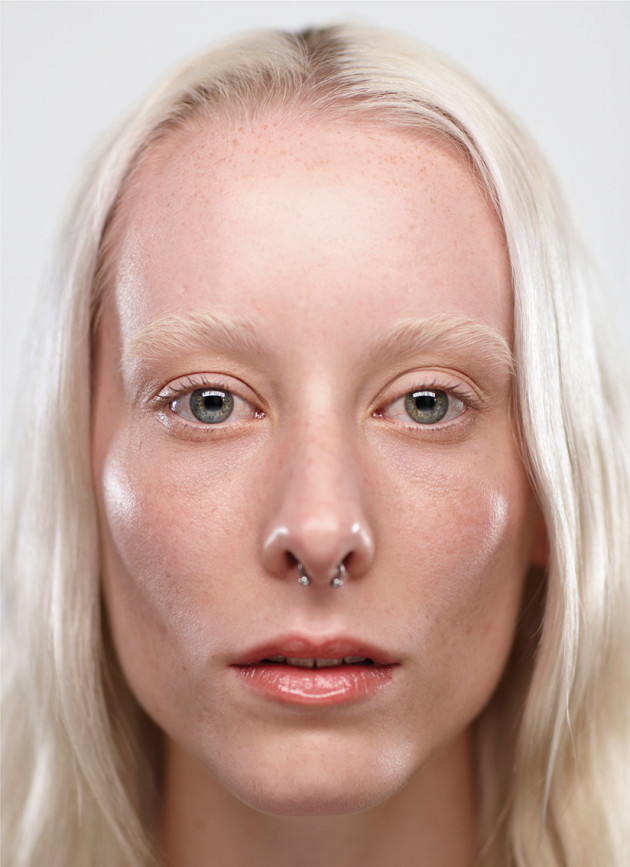If you ever Google “photography awards”, you’d better strap yourself in. You will be granted the full gamut of results with competitions from Australia to Zimbabwe and everywhere in between. It doesn’t take a savant to figure out that there must also be a relative googol of photographers with “award-winning” in front of their name. So how could the old accolade still have the same ring? And just who, exactly, are the real winners? Helane Steinmüller investigates.
In a gentler world, before sepia and greys turned to colour, winning a photographic competition was considered the pinnacle of a photographer’s long career. With photographic and darkroom skills taking years to master, and few competitions on the ground, winning such an event was clear recognition that a photographer had achieved a level of advanced and revered expertise. The rarity made the honour of winning close to being awarded the Victoria Cross.
Turn the page to an era when rainbow digital can be mastered by anyone. Throw in a host of photography-related, (or not), businesses eager to promote themselves by cashing in on an almost universal desire to be famous and, if not rich, at least richer, and you have the formula for a closed circuit of symbiotic gratuity. Everybody wins, except those, of course, who don’t.
With such overabundance however, are competitions really doing professional photographers any favours? Do awards still have meaning amidst the saturation, or has entering competitions become just another expectation and unwanted pressure for photographers in a cut-throat industry where over-exposure has become the norm?
You gotta be in it
There are some very good professional photographers who never enter competitions, but for those who do, the reasons are as varied as the competitions themselves. While providing a perfect opportunity to publicise a photographer and their work, many entrants are actually interested in a much bigger picture. Photojournalist Paul Hansen, develops close connections with his subjects and admits he consciously considers his entries for content, rather than the impact of the image alone. Awarded 2010 and 2012 Newspaper Photographer of the Year in the annual Pictures of the Year International (POYi), and World Press Photo of the Year 2012, Hansen considers empathy to be a prime motivator. “I enter competitions for the sake of the story, he says. “I only do, or enter stories I am interested in myself. My heart has to be in it.”

Photographer Massoud Hossaini is also more closely connected to the narrative of his entries than any awards. Having been wounded in the Kabul suicide-bombing he photographed for his 2012 Pulitzer ‘Breaking News’ prize, he says he was not at all concerned with competitions at the time. “I gave permission to Agence France-Presse (AFP) to apply for any competitions, but my purpose was to find a better stage to tell that story and share it with as many people as possible. I didn’t even know that my office applied for a Pulitzer,” he says.
“Competitions are a terrific way to have your work disseminated to a wider audience,” says photo-media artist David Manley, one of the three 2012 Head On Portrait Prize winners. He, along with many peers, also values the opportunities awards afford to meet a wider community of other artists and photographers. Many also spoke of the strong encouragement competitions provided to improve technique and creativity. Wedding and portrait photographer, Ryan Schembri, 2012 AIPP Australian Wedding Photographer of the Year, and three-times NSW AIPP Wedding Photographer of the Year, feels a switch flip when he knows a competition is coming. “I certainly don’t enter to win,” he says. “I enter to push my creativity and limits each year. Awards often get you thinking out of the box.”
Ingvar Kenne, winner of 2013’s Head On Momento Photobook of the Year and Portrait Photobook category, and 2009 National Photographic Portrait Prize believes that as well as pushing creativity, the preparation required for competitions also contributes to constructive self-evaluation. “Competitions make you take stock of what you’ve done during the year as you look through your old material for submissions.”
Sports photographer, Adrian Dennis agrees. In 2013 alone, he was the recipient of ten awards including the 2013 Nikon Sports Photographer of the Year in the Picture Editors’ Guild Awards; Barclays 2013 Photographic Awards - Shot of the Season; 2013 The Press Photographers Year - Photograph of the Year, First prize Olympic Folio and First prize Sports Folio of the Year; and 2013 first place National Press Photographers Association (NPPA) Best of Photojournalism (USA) - Olympic Feature. Dennis believes in making the most of the opportunity. “My work really is done and dusted everyday. We shoot the assignment, transmit the photos and it’s on to the next job. So when looking for potential competition entries each year, it can be really useful going back through my archive. Sometimes I find a bit of inspiration and shoot jobs a little differently next time.”

Of those interviewed, none considered marketing as reason to enter awards and felt no pressure to enter to keep up appearances in the market. However, it’s no secret that others in the wedding and portrait industry do feel compelled to continue entering so that their e-mail signature contains accolades from the most recent years, and not only awards from years ago. Advertising photographer Adam Taylor has been awarded Photographer of the Year at the 2012 Australian Hotshop Awards, Advertising Photographer of the Year at the 2011 International Photography Awards, as well as winning 1 gold and 2 silver Lions at the 2008 Cannes International Advertising Awards and the 2008 Gold MOBIUS Award. He maintains that self-promotion doesn’t figure for him when entering competitions. “For me, the most important thing is that I love photography,” he says, “and I’m continually inspired to challenge myself further with image making, and to put myself in situations where I have an opportunity to take incredible photographs.”
Dennis was the only one to admit to a “serious competitive nature” that needed appeasing. “I like to win,” he says. “There’s not too many jobs where you are judged daily on your work. If I lose this passion and competitive streak, it may be time to try something else.” It would not be too far-fetched either to assume that many photographers would enjoy the same thrill of healthy competition with their peers.
The Money or the Box
Whether consciously competitive or not however, most entrants would agree they participate in competitions with, at least, a hope of winning. But winning what, exactly? A Pulitzer Prize for photography will net the winner US$10,000 but so will photographic competitions run by local department stores. The latter are also substantially easier to win, and, if money is a motivation, there are even grander opportunities. The Moran Contemporary Photographic Prize, for example, is $50,000. While few professionals would ever admit to entering for the cash alone, it really does not seem to factor highly. Hossaini, in fact, gave away a share of his prize money to the child whose terror he recorded in his award-winning image, and continues to financially aid her family’s recovery. The real prize, for many it seems, is often other than what is officially offered by the sponsor.

“There are multiple benefits for most people,” says photographer and film-maker Moshe Rosenzveig, and the founder and director of the Head On Photo Festival. “The biggest one is obviously the exposure. Some people get work and recognition, and they are part of the community, all with the bonus of winning the prize on top of that.” Recognition from peers certainly figured large amongst those interviewed. “I get recognition from my clients every single day,” explains Schembri. “I don’t need any more recognition from them. Recognition from the leaders of the industry and everyone that goes to those awards is the biggest thing. To know that I stand in high regard amongst them is critical.”
Kenne also believes in the value of the feedback competitions provide. “People give you a nice hug and say ‘good on you’ and that makes you believe that what you’ve done is worth it. Otherwise you work in a vacuum and you need the feedback occasionally to think, ‘OK, what I’ve started here is quite good’”.
Another motivation for entering is the prestige of winning a pinnacle award. After all, not all accolades are equal. A Pulitzer is still definitely worth much more in kudos than the department store award of equal or greater monetary value. Hossaini admits there were certainly benefits to his new title. “After I won, I had several offers. Editors knew me much better and that helped me to improve my work and find more opportunity in this field. A lot of government members and people know me now, and that’s made it easy sometimes to get access to cover some things that would have been difficult before.”
All those interviewed spoke of similar advantages which were a direct result of winning, such as opportunities for work, making valuable connections, and the offers of new experiences outside of photography. “Re-inventing yourself and learning new skills can only be a good thing,” says Dennis, who has expanded his repertoire by accepting post-win offers of speaking at seminars.
There were few reported downsides to winning, although Schembri points out that those going into a competition with unrealistic expectations or negative attitudes will, undoubtedly, come out disappointed. Hossaini says he is now not only recognised by people in advantageous places, but also by the terrorist groups he called ‘sons of the devil’, but makes light of the situation. Of the others interviewed, one photographer suffered a downturn in ‘bread and butter work’ after a win and suspects clients may have thought he was above such small jobs (so very far from the truth, he laments). Dennis admits to no more hardship than being ribbed a little more than usual from the sidelines. And that’s about it. Winning is mostly good. Very good in fact.

Is more less?

There is however, much talk of the over-proliferation of photographic competitions now available. With such diverse reasons to enter, and such a variety of contestants from all the differentiated industries within professional photography (not to mention amateur), it is possible that only a rich array of competitions and prizes could meet the demand. Is it really the multitude of competitions creating the frenzy, or are they merely serving it?
While many of those interviewed acknowledged the inundation, none expressed any negative comments. “As long as they are being judged by people who take it very seriously and objectively, I think it’s a good idea,” says Rosenzveig. “I can’t see it as a bad thing. The more people who are engaged in the crafts and arts the better.”
Though there are, undoubtedly, dubious competitions out there, they have not tainted the concept. While endless possibilities may give amateurs trouble sifting through the chaff to find the wheat, professional photographers cannot be unaware of which competitions carry the weight in their industry. “I don’t think [proliferation] has had much effect,” says Taylor, “because the better photographers know which competitions are the most highly regarded and the most prestigious.”
This is especially true today, when those who are not keeping up standards become rapidly very apparent via social media. And, just as Manley advises never to enter substandard work into a competition just to remain current and maintain a profile, many would agree, it is neither wise to enter a substandard competition for the same reason.
“I only enter competitions that are established and recognised within my profession,” says Dennis, echoing all those interviewed. Dennis also warns: “Beware of competitions which look like a money-making exercise.” While many good competitions have fees, it should be obvious they have contributed to the quality of the event. “You definitely also need to pay attention to what rights you’re giving the organisers,” he adds. “So read the small print.” (And check out our article on rights grabbing in the Jan/Feb 2012 issue.)
And the winner is...
The advice is not only to choose the competition wisely, but also to choose work strictly “by the brief”. All those interviewed agreed it is impossible to second-guess judges’ tastes. They recommend following guidelines carefully, but going with what you love. “You always have to believe in what you’ve done,” says Kenne. “If you like something yourself and have thought about it, then that’s what you should put in. It’s all luck to win something. It’s good enough sometimes to just make the cut, to win that lottery, and be included in the show. It’s great just to be included.”
Rosenzveig couldn’t agree more. While he says a lot of time and effort goes into choosing the best entry, the choice may be affected by many factors and is not an absolute. “I think it’s very important for people submitting material to realise that to get into the collection means you are already winning. It doesn’t mean that after number one, two, three, the value diminishes.” He believes that while winning may be great, not winning is not the beginning of the end. And entrants who understand this will actually submit better work next time round.
Schembri goes even further. “Winning a Gold Award is just telling you that you are really great as is,” he says, “but not much else. I think the best things that have come to me from entering awards has been when I get my prints demolished by the judges. The best advice I have received about printing, posing and lighting has been through, not any workshop or seminar, but the award system, in the feedback on my prints.”

Judge not, lest ye be judged
With all good will and intentions however, even in the very best photography competitions, judges and winners are not immune to controversy, scandal, and gossip. There will always be unsubstantiated complaints made by unsuccessful entrants, genuinely perplexed that, again, their genius went unrecognised. The use (or alleged abuse) of retouching, especially, is an oft-cited complaint. And some choices are simply unpopular, the judges’ tastes out of sync with that of the public. Indeed, it is not unheard of for the organisers themselves to be horrified by the choice of a judge or panel. Some competitions however have borne witness to criticisms which, in fact, may be well justified. Judges’ cronyism, choosing by agenda or trend alone, rather than quality, and rescinding awards, for whatever reason, will always ensure an outcry.
In spite of bad press however, competitions endure. “Even if it is extremely hard to judge something as subjective as photography,” says Hansen, “there is value in creating a space where the merits of photography are discussed.” Rosenzveig adds: “Exhibitions attract a lot of people because a lot of people are involved. This year [Head On] had over 20,000 people physically going through the show, and this is not including the people checking the website. We opened this part of the industry to a new crowd, and we gave a chance to people who usually don’t get much exposure for their work.”
And herein perhaps lies the heart of the issue, for no matter the reason for running a competition, no matter the reason for entering, and no matter the proliferation, nor the controversy; the real prize, for everyone, is that competitions provide a valuable platform for communication within and beyond the industry. Communication that is ignited between photographers, collectors, clients, politicians, and the public. This not only provides further sustenance and inspiration for present photographers, but also for the many, many people who would otherwise never have seen the work. Best of all, it provides the perfect catalyst for the next generation of individuals who will simply, and irrevocably, fall in love with the potentiality of a camera.
Contacts
Adrian Dennis www.adriandennis.com, www.afp.com
Paul Hansen www.paulhansen.se, www.dn.se
Massoud Hossaini www.ap.org
Ingvar Kenne www.ingvarkenne.com
David Manley davidmanley-photo-artist.blogspot.com
Moshe Rosenzveig www.headon.com.au
Ryan Schembri www.ryanschembri.com
Adam Taylor www.adamtaylorphotography.com


